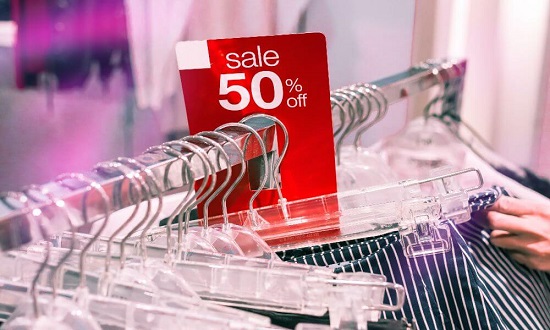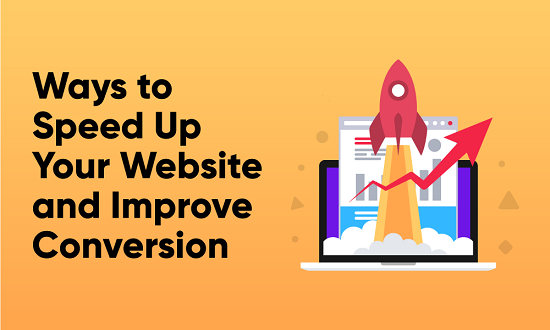4 key elements for a successful e-commerce store
eCommerce
Starting a successful online store is more than just creating a website and selling products. We often see stores struggle after many ineffective promotions and advertisings. They also don’t find similar results even after “copying” the same tactics other shops have boasted about. We believe that the problem has less to do with the actual tactics employed, but with the lack of strategic planing on how to do them.
Here we share 4 key elements of successful e-commerce stores that are useful for not only newbies who have just started the e-commerce journey but also shops that have been struggling to improve their sales effectively.
Understand your market and competition

Knowing your market is the most important thing.
Start your Shopify 14-day trial with FireApps
Did you know Shopify is now accounting for 20% of the e-commerce business.
Over 2200 merchants open their Shopify store everyday and 50% of them have a repeat purchase. Join them today!

Conduct market research for the products you are planning to sell. Things like understand what problems people have, why they need your product specifically, what are their social-economical backgrounds, what are their common behaviors and interests, and who your competitors are, etc. Know everything there is to know about the market you’re going after.
Those information are critical to shape what you sell, how much you should sell them, what your messaging is, and what type of advertising you can effectively conduct. A savvy business owner would be able to clearly articulate their target audience so they can develop strategies specifically tailored for the market. For example, if you’re selling a high-end t-shirt that costs more than $100 a piece, you probably don’t want to target college students who may like your style but won’t have the money to buy them.
There’s many ways to go about this. If you are already a domain expert in the field, then you may already have a strong understanding of the market needs. Otherwise, browse sales data on platforms like eBay and Amazon to see what has been selling well, and read their products reviews to understand what are the customer sentiment and needs. You can also use Google Trend to see changing trends on different types of product, or use Keywords Planner to see how many competitors are buying clicks and keywords searches. This can give you an idea of how competitive a market is.
It’s also important to know that you may not know everything before you start, and that’s okay. As you sell, promote and advertise, you will gradually form a better understanding of which demographic segments respond better with your messaging and you can continue to iterate.
Optimize User Experience

Keep your shop’s UI simple and clear so customers can browse and purchase products easily. This is essential for both sellers and buyers. Customers would lose patience if the purchase process is complicated, not having enough information, and simply takes too much time. Many customers will simply drop off when they hesitate about the purchase.
For instance, if you are selling apparel, one common purchase hesitation is deciding which size to purchase. This is a big problem if you are a new brand and people are not yet familiar with how your clothing fit is like. To reduce such hesitation, one effective way is offering a clear size chart and fit recommender which help customers find the right size. You can use Fit Recommender from Kiwi Sizing for this problem. Customers don’t need to measure their waist or hip and can instantly get a recommendation by providing simple information like age, weight and height. Kiwi Sizing can not only help reduce purchase hesitation but also lower returns.
There are also apps that provide urgency banners, countdown timers, pop-up spinners, similar product recommendation, discount give-aways, and many other things which are all tactics that could improve conversion or increase your average bucket size. Utilize those types of tools and have proven to improve conversion so you have a more optimized shopping funnel.
Have Effective Branding

Branding help shape how your customers perceive your shop. And because a lot of purchase decisions are driven by emotions, it’s worth spending a lot of time thinking of how you want to convey your brand. This is especially true if you are selling high ticket items or selling a “life style” brand.
Tactically speaking, posting frequently on blogs and being active on social media can help build your brand image. When writing blogs, it is important to stand in your customers’ shoes and think beforehand the type of question and responses you may get so you can pro-actively include them in your articles and posts. This also ties back to understanding your customers so you can write those content effectively
Leveraging influencer promotions is also useful for brands. Influencers have become a really effective way to drive sales and reach certain demographics of the market. When an influencer “endorses” your brand, you also gain some of the personality images those influencers have. Once you have decided what you’re selling and who you are selling to, you may start to look for relevant influencers, like instagrammers, journalists, bloggers, YouTubers, public figures, etc. It is common to give free samples for the influencers so they can have a more geniune opinion for your product endorsement.
Being Data Driven to make successfull e-commerce stores

We believe this is one of the most important underlying attitude of a successful store and cuts through all 3 points we mentioned above. It is a less understood concept but the idea is that the decisions you make should be driven by clear data and results by running experiments that compare different tactics. Experiments can give you a clear direction of how you can evolve your business and strategy.
One technology that has emerged in recent years is the idea of A/B testing. Some examples of experiments you can run are:
- Website optimization: For example, if you have different versions of your shop, with slightly different variations of user experience (i.e. version A has size recommender and version B has only size chart), and your customers are divided into groups, and each group only sees one version. This way you can compare how customers in each “test group” has the best conversion rate and then only choose the winner and continue the next iteration.
- Advertising: where you experiment with different marketing content or target audience.
- Email marketing: where you send our different versions of email and measure the difference in CTA conversions.
We hope the 4 elements can spark some inspiration for how you operate your business. Understand that running a business is a continued process and being successful requires constant learning, iterating and adapting.
You might see Shopify is the enormous and hard to understand, right? Because Shopify is actually the big platform for e-commerce activities and you haven’t read this complete tutorial about Shopify.
Launch your Shopify store now! https://www.shopify.com/



Leave a Reply